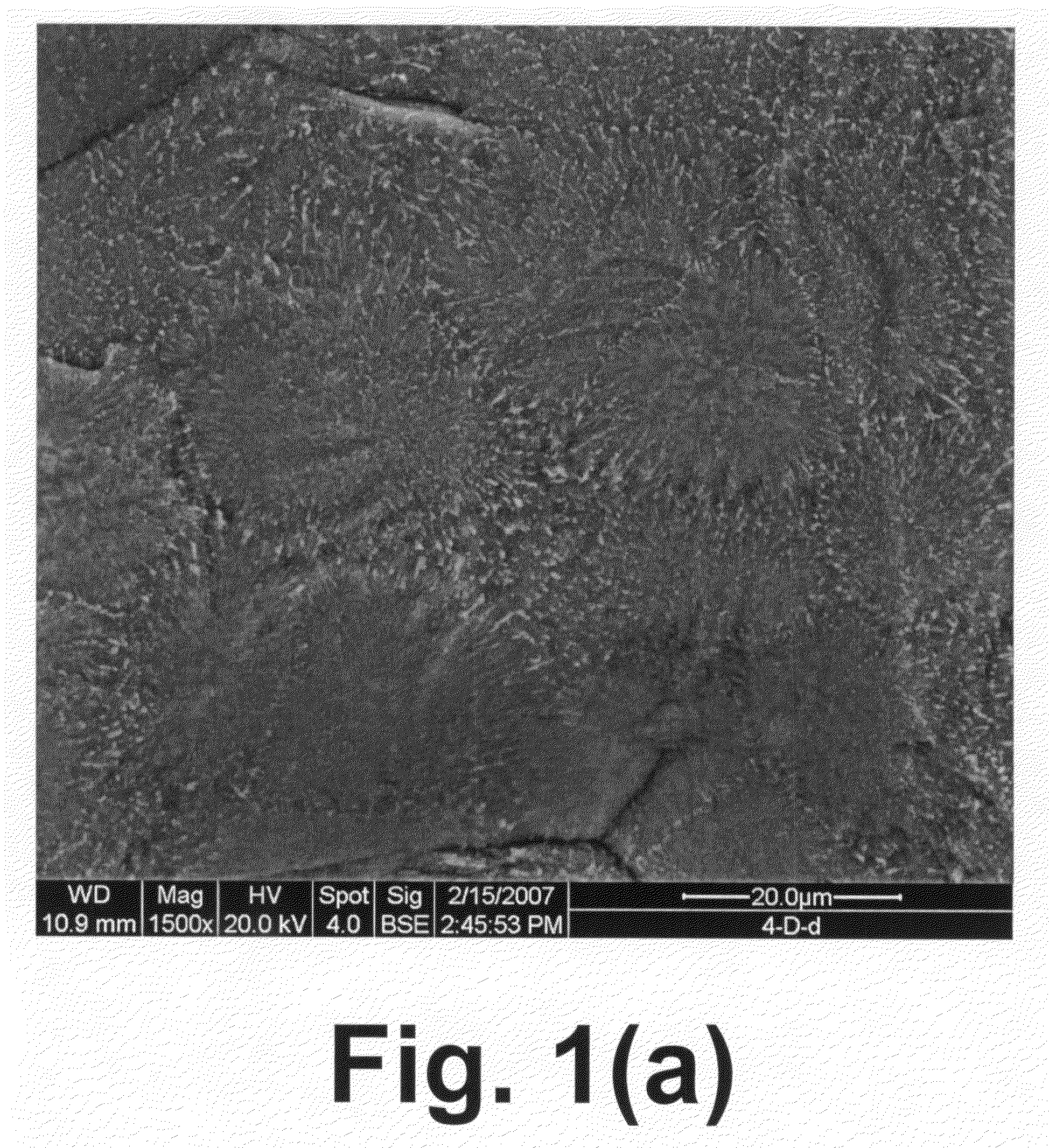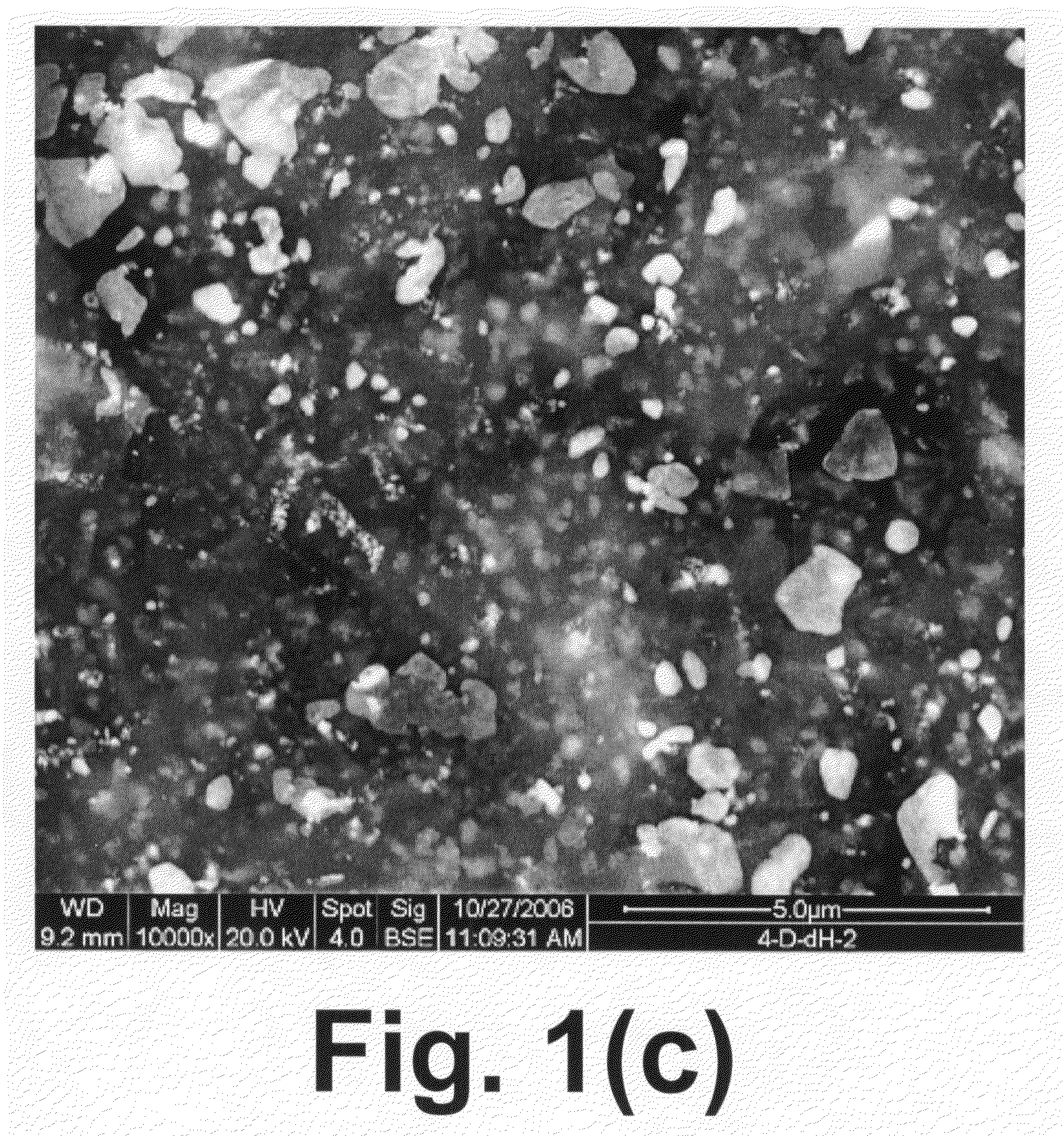Method for producing catalytically active glass-ceramic materials, and glass-ceramics produced thereby
a technology of glass-ceramic materials and catalytic activity, which is applied in the direction of catalyst activation/preparation, metal/metal-oxide/metal-hydroxide catalysts, chemical/physical processes, etc., can solve the problems of increased production cost, unsatisfactory catalytic and mechanical properties, and the vulnerability of finished products to deactivation, etc., and achieves the effect of efficient method
- Summary
- Abstract
- Description
- Claims
- Application Information
AI Technical Summary
Benefits of technology
Problems solved by technology
Method used
Image
Examples
example
[0047]Approximately 50 grams of a glass-ceramic having composition 4-D were crushed and sieved to select particles ranging from 100 microns to 400 microns and these fragments were placed in a 0.75 in. 316 stainless steel tube that was located within a tube furnace. The tube furnace was held at 600° C. overnight while a low flow (˜10 cc / min) hydrogen gas was directed through the tube.
[0048]This material was tested in a packed-bed configuration with simulated syngas in a 1″ quartz reactor at a variety of temperatures. The experiments were performed at atmospheric pressure and temperatures of 650° C., 750° C., 800° C., 850° C. and 900° C. The feed gas flow rate was maintained at 1199 cc / min (room temperature) and consisted of 16% H2, 8% CO, 12% CO2, 4% CH4, 16% H2O (steam), 44% N2, and 20 cc / min of N2 as a naphthalene carrier gas. Twenty grams of crushed and reduced sample 4-D was loaded into the reactor with an L / D=1, and during testing a space velocity of 5500 hr−1 was maintained. Th...
PUM
| Property | Measurement | Unit |
|---|---|---|
| Temperature | aaaaa | aaaaa |
| Temperature | aaaaa | aaaaa |
| Length | aaaaa | aaaaa |
Abstract
Description
Claims
Application Information
 Login to View More
Login to View More - R&D
- Intellectual Property
- Life Sciences
- Materials
- Tech Scout
- Unparalleled Data Quality
- Higher Quality Content
- 60% Fewer Hallucinations
Browse by: Latest US Patents, China's latest patents, Technical Efficacy Thesaurus, Application Domain, Technology Topic, Popular Technical Reports.
© 2025 PatSnap. All rights reserved.Legal|Privacy policy|Modern Slavery Act Transparency Statement|Sitemap|About US| Contact US: help@patsnap.com



